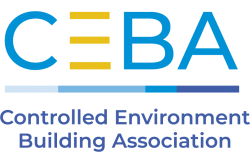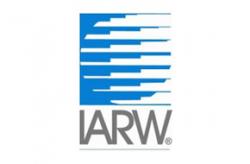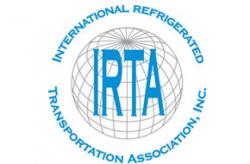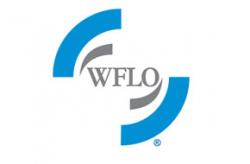OSHA Ramps Up Covid Enforcement
Changes include updated guidance, focused enforcement, accelerated inspections and potentially a temporary standard.
Responding to the COVID-19 pandemic continues to be a high priority for the Biden Administration. Despite increases in vaccinations and lower cases in many parts of the country, President Biden is calling on the Occupational Safety and Health Administration (OSHA) to ramp up its enforcement efforts to regulate workplaces. Biden was critical of OSHA during the Trump Administration for not being aggressive enough in protecting workers from COVID-19.
The Department of Labor’s Office of Inspector General (OIG) recently issued a report on OSHA’s COVID enforcement in 2020 that supports Biden’s contentions about OSHA enforcement last year. The report found that onsite inspection and travel restrictions led to a dramatic decrease in inspections. Comparing inspections over an eight-month period in 2019 and 2020, OIG found that OSHA conducted more than 26,000 inspections in 2019 compared with approximately 13,000 inspections in 2020. The OIG report also noted that OSHA received 15% more complaints in 2020 but performed 50% fewer inspections. The OIG concluded that these factors led to, “an increased risk that OSHA has not been providing the level of protection that workers need at various job sites.” Among the OIG’s recommendations was for OSHA to issue an Emergency Temporary Standard (ETS) to establish enforceable requirements.
Updated OSHA COVID-19 Guidance
Shortly after taking office, the Biden Administration initiated a series of actions to increase its COVID-19 policies and enforcement. One of its first steps was to update OSHA’s COVID-19 guidance to employers. While not an enforceable standard on its own, the guidance sets the agency’s expectations for how employers address COVID-19 hazards. The updated guidance emphasizes the importance of implementing COVID-19 prevention programs. Key elements of prevention programs include:
- Assign a workplace coordinator
- Identify where and how workers might be exposed to COVID-19 at work
- Identify a combination of measures that will limit the spread of COVID-19 in the workplace, in line with the principles of the hierarchy of controls
- Consider protections for workers at higher risk for severe illness through supportive policies and practices
- Establish a system for communicating effectively with workers and in a language they understand
- Educate and train workers on company’s COVID-19 policies and procedures using accessible formats and in a language they understand.
- Instruct workers who are infected or potentially infected to stay home and isolate or quarantine
- Minimize the negative impact of quarantine and isolation on workers
- Isolate workers who show symptoms at work
- Perform enhanced cleaning and disinfection after people with suspected or confirmed COVID-19 have been in the facility
COVID National Emphasis Program
In addition to updating COVID-19 guidance, OSHA has also implemented a National Emphasis Program (NEP) to focus enforcement activities related to the pandemic. The goal of this NEP is to significantly reduce or eliminate worker exposures to COVID-19 by targeting industries and worksites where employees may have a high frequency of close contact exposures and therefore control the health hazards associated with such exposures. This goal will be accomplished by a combination of inspection targeting, outreach to employers and compliance assistance. The NEP augments OSHA’s unprogrammed COVID-19 inspections by adding a component targeting specific high-hazard industries or activities where the disease hazard is prevalent. The NEP targets establishments that have workers with increased potential exposure to this hazard and includes provisions to ensure that workers are protected from retaliation related to COVID-19 issues. The NEP will be implemented by OSHA Area Offices and equivalent programs will be administered by state plan states. OSHA is expected to continue prioritizing COVID-19 fatalities, complaints and referrals through unprogrammed inspections. However, the NEP adds programmed inspections to the agency’s pandemic-related activities.
The NEP includes lists of targeted industries that OSHA has identified as being at higher risk for workplace transmission of COVID-19. The identified targeted industries include several categories impacting the cold chain including warehousing and storage, meat and poultry processing and grocery stores. Programmed inspections can be conducted either on-site or a combination of on-site and remote methods. GCCA members with multiple facilities should be aware that OSHA will provide a letter to the corporate entities regarding the COVID-19 inspection. It is important that any identified deficiencies during an inspection also be addressed in other facilities within the company. Failure to abate known hazards in another facility could result in a repeat or willful citation.
Emergency Temporary Standard
When this article was written in late May, the Biden Administration was contemplating the issuance of an Emergency Temporary Standard (ETS) specific to COVID-19 in the workplace. An ETS would go into effect immediately upon issuance and be in effect for six months. It is expected that OSHA may also move forward with a rulemaking to establish a permanent infectious disease standard. President Biden directed OSHA to determine whether to issue an ETS by March 15, 2021. However, the process was delayed as newly confirmed Labor Secretary Marty Walsh requested additional review of the data and science related to the pandemic before moving forward. The ETS was transmitted to the White House Office of Information and Regulatory Affairs (OIRA) on April 26, 2020. The final review generally takes around two weeks, but the process has taken longer as OIRA has accepted over 40 meetings with interested stakeholder on both sides of the ETS issue. GCCA joined with partners in the food industry in expressing concerns with a potential ETS. The group asserted to OIRA that given increased vaccination rates and falling caseloads, an ETS is not needed at this time. GCCA and its partners stated that should an ETS be issued, it would need to provide sufficient flexibility to account for the broad diversity of operations across the food industry and allow for changes as guidance from the Centers for Disease Control (CDC) continues to evolve.
Further complicating the OIRA review is updated guidance from the CDC that fully vaccinated individuals can largely resume their pre-pandemic normal activities, including that mask usage is no longer needed for those fully vaccinated. OSHA has acknowledged the new guidance from CDC and has indicated that it is reviewing its materials in light of the new information. While uncertainty remains with the fate of an ETS, the COVID-19 NEP gives clear indications that OSHA will be accelerating its pandemic-related inspections. Regardless of the status of the ETS, GCCA members are strongly encouraged to review the current OSHA and CDC guidance and their own protocols and be prepared for increased OSHA enforcement activity. GCCA will continue to actively engage with OSHA and the Biden Administration as the process moves forward and update members at COVID policies evolve.
LOWELL RANDEL is Senior Vice President, Government and Legal Affairs at GCCA.
EMAIL: lrandel@gcca.org
Source: Cold Facts July/August 2021 issue



